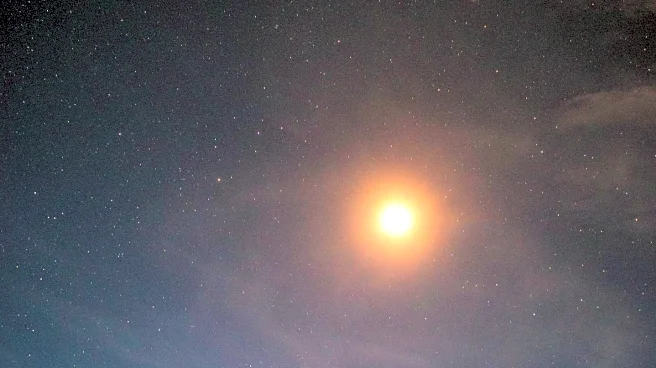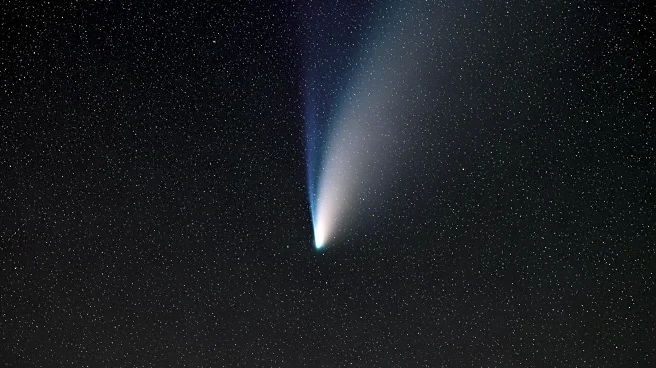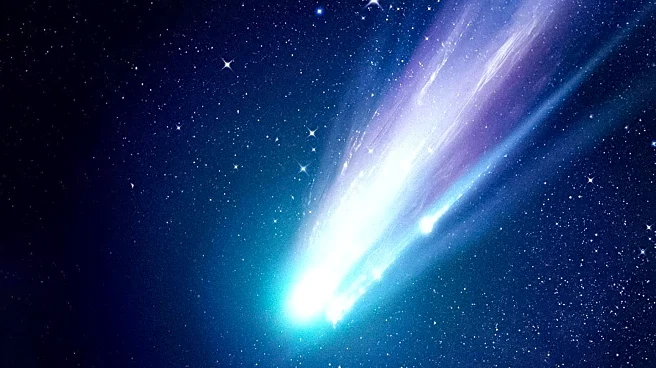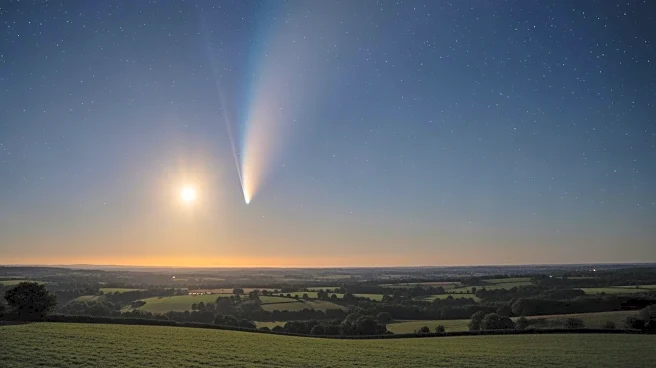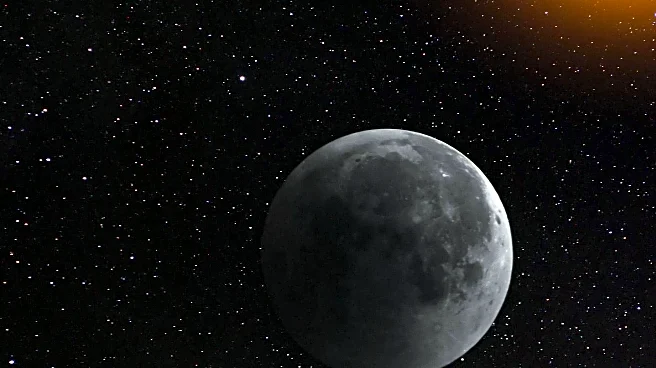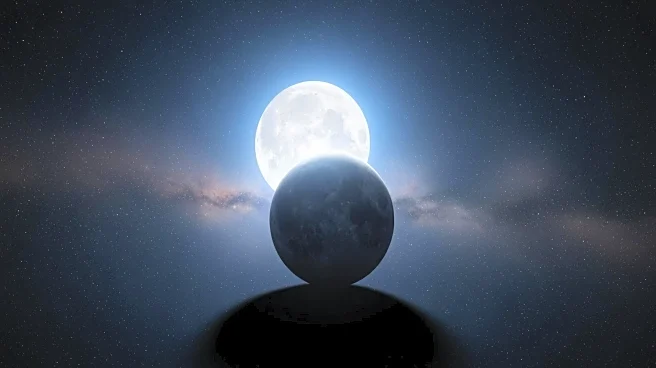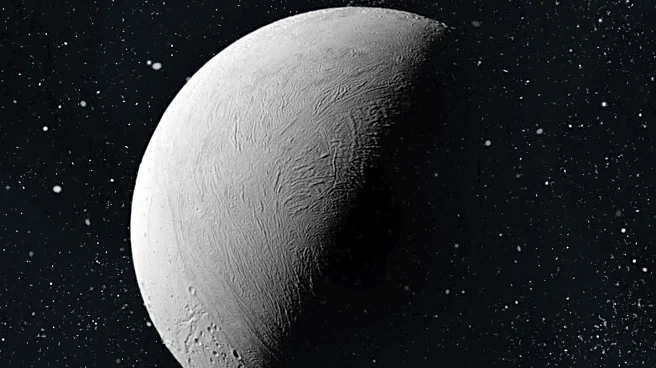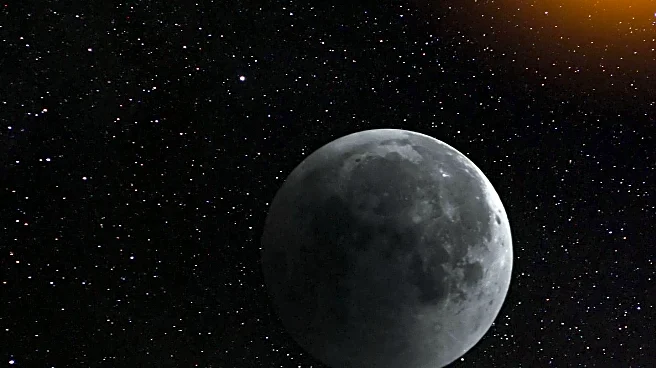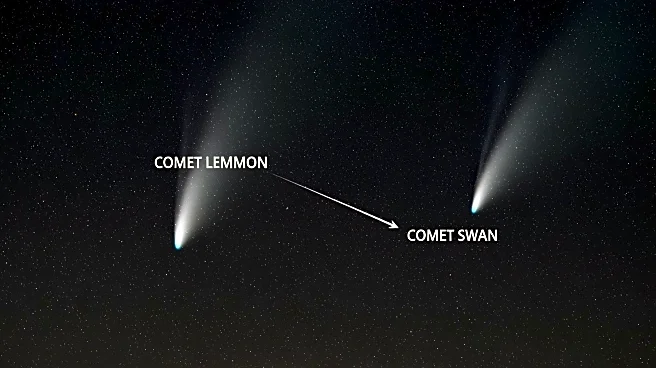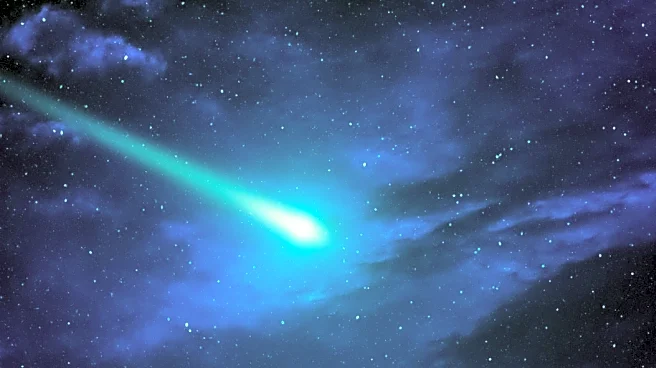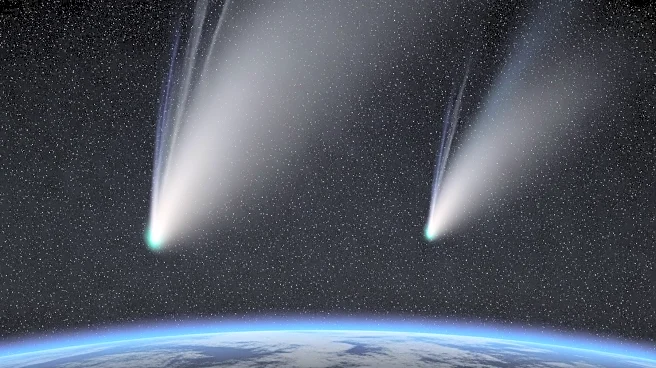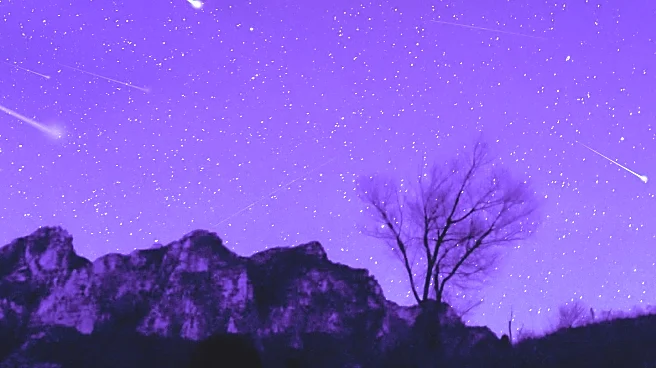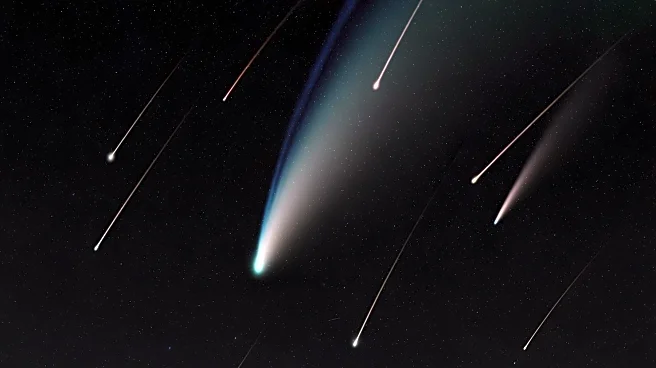What's Happening?
On the morning of October 19, early risers will have the opportunity to witness a celestial event featuring the moon and Venus. The crescent moon, illuminated at just 4 percent, will appear in close proximity to Venus, the brightest planet in the sky,
as seen from Earth. This event will be visible low on the eastern horizon approximately 60 to 75 minutes before sunrise. Despite the apparent closeness, the moon is about 247,000 miles from Earth, while Venus is nearly 147 million miles away. This visual pairing is a result of perspective rather than actual proximity. October marks the last chance to view Venus against a dark sky until April, as it is gradually moving behind the sun from Earth's perspective.
Why It's Important?
This celestial event is significant for both amateur and seasoned skywatchers, offering a rare visual treat. The moon and Venus are two of the brightest objects in the night sky, and their conjunction provides a striking sight. Historically, such alignments have intrigued humans, often being associated with mythological and astrological interpretations. While modern science dismisses any astrological influence, the event remains a reminder of the beauty and complexity of our solar system. For astronomers and enthusiasts, it is an opportunity to observe and appreciate the dynamics of celestial bodies.
What's Next?
As Venus continues its journey behind the sun, it will become less visible in the coming months, reappearing in the evening sky by next April. Skywatchers are encouraged to take advantage of this event, as similar alignments will not occur frequently. The event also serves as a reminder of the ongoing interest in celestial phenomena, which can inspire educational and outreach activities related to astronomy.
Beyond the Headlines
The fascination with celestial events like the moon-Venus conjunction highlights the enduring human interest in the cosmos. Such events can spark curiosity and inspire educational initiatives, encouraging people to learn more about astronomy and the universe. They also serve as a reminder of the historical significance of celestial observations, which have influenced cultures and scientific understanding throughout history.
